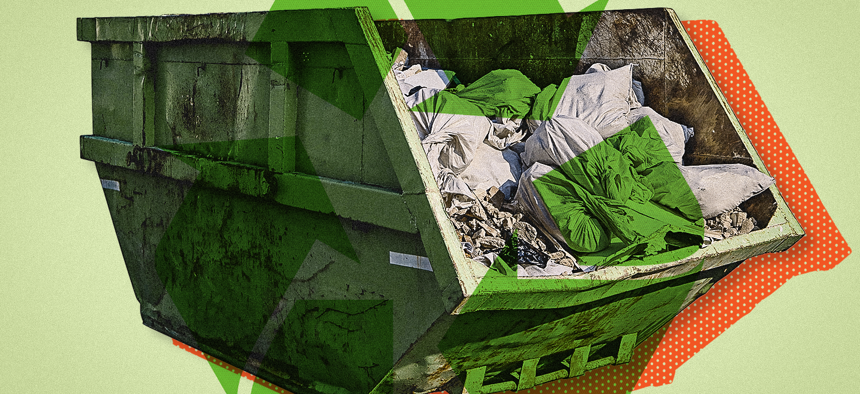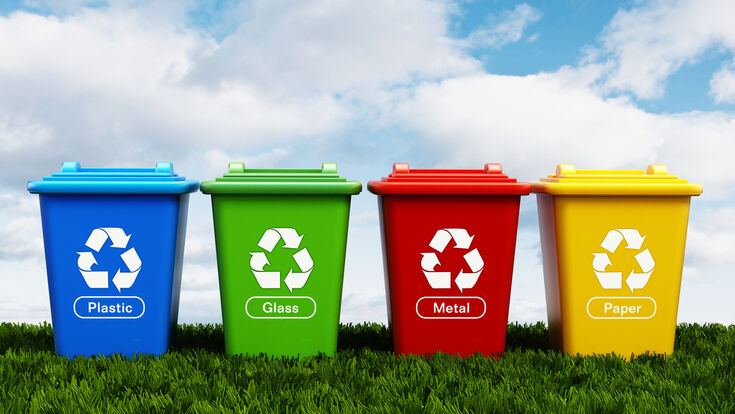Obtain Involved with Recycling Lives Services for a Greener Future
Obtain Involved with Recycling Lives Services for a Greener Future
Blog Article
Exploring Different Types of Waste in Modern Waste Monitoring Solution
The modern landscape of waste monitoring includes navigating a complicated array of waste kinds, each needing specialized handling and disposal approaches to reduce ecological effects. Metropolitan solid waste, dangerous waste, electronic waste, and natural waste each present distinctive difficulties and chances for source healing.
Municipal Strong Waste
Local solid waste, often referred to as house trash or trash, encompasses a range of thrown out materials created by residential, industrial, and institutional sources within a town. This waste stream generally consists of items such as packaging, food scraps, yard trimmings, paper, plastics, textiles, and discarded house products. The monitoring of metropolitan solid waste is a crucial element of city planning and public health and wellness, requiring effective collection, transportation, and disposal systems.
Reliable waste administration systems are created to lessen ecological influence while making best use of resource healing. Composting organic waste, such as food scraps and backyard trimmings, not just decreases landfill usage yet also generates valuable dirt changes.
Municipalities must likewise resolve the logistical and financial obstacles associated with waste management. Carrying out pay-as-you-throw systems, boosting public awareness, and purchasing modern technology can significantly enhance waste diversion rates. By incorporating these methods, towns can promote sustainable neighborhoods, decrease greenhouse gas exhausts, and save natural deposits.
Contaminated Materials

Reliable hazardous waste monitoring includes numerous crucial steps: recognition, disposal, segregation, and treatment. Identification requires the category of waste based on its unsafe buildings. Segregation makes sure that hazardous products are kept separately from non-hazardous waste to avoid cross-contamination. Treatment approaches, such as chemical neutralization, incineration, and stabilization, are employed to decrease the toxicity, quantity, or mobility of the waste. Lastly, disposal alternatives, including safe landfills and below ground storage space, are chosen to make sure long-term containment.
Regulatory structures, such as the Resource Conservation and Healing Act (RCRA) in the USA, offer guidelines and standards for contaminated materials administration. Adherence to these policies, paired with advancements in waste treatment technologies, is important in minimizing the risks related to dangerous waste.
Digital Waste
Electronic waste, frequently referred to as e-waste, represents a swiftly growing difficulty in waste administration systems worldwide. This sort of waste incorporates thrown out digital gadgets and equipment such as smartphones, computers, tvs, and other electronic devices. The fast rate of technical improvement, combined with decreasing product life expectancies and customer need for the most recent gadgets, has exponentially increased the volume of e-waste created yearly.
E-waste is especially problematic as a result of its complicated structure, commonly consisting of harmful materials like cadmium, lead, and mercury, which posture substantial ecological and health and wellness risks if not effectively handled. Alternatively, e-waste also consists of important materials such as gold, silver, and copper, which can be recovered and reused. The twin nature of e-waste-- both important and hazardous-- demands customized handling, recycling, and disposal procedures.
Effective e-waste administration includes stringent regulatory frameworks, durable collection systems, and progressed reusing innovations. Public recognition and engagement are vital, as inappropriate disposal practices, such as unlawful dumping and casual recycling, intensify ecological contamination and health dangers. Consequently, enhancing e-waste monitoring methods is important for alleviating ecological influence and recuperating beneficial sources in a progressively digital globe.

Organic Waste
Organic waste, comprising kitchen scraps, lawn trimmings, and agricultural residues, represents a considerable portion of the global waste stream. This kind of waste is eco-friendly, meaning it can be broken down by microbes right into less complex natural compounds. Despite its potential for natural decomposition, inappropriate management of organic waste can bring about negative ecological influences, consisting of the exhaust of greenhouse gases such as methane, which add to environment modification.
Efficient administration of natural waste is crucial for lessening these ecological impacts (recycling lives services). Composting is an extensively adopted method, transforming organic waste into nutrient-rich compost that can enhance soil health and wellness and farming performance. Additionally, anaerobic digestion is an emerging innovation that converts natural waste right into biogas, a renewable resource source, and digestate, which can be made use of as plant food
Municipalities and waste administration entities must apply durable organic waste collection and therapy programs to maximize the benefits of these procedures. Public education and learning projects can also play a critical function in encouraging homes and organizations to separate natural waste from other kinds of Our site waste. By focusing on the monitoring of natural waste, societies can lower landfill usage, reduced greenhouse gas discharges, and create useful byproducts for farming usage.

Cutting-edge Waste Administration
In the world read more of waste monitoring, cutting-edge methodologies are transforming exactly how societies manage their refuse, intending for sustainability and performance. One noticeable technology is the implementation of wise waste bins outfitted with sensors that keep an eye on fill levels and maximize collection routes.
An additional notable development is the fostering of waste-to-energy (WtE) innovations. By converting non-recyclable waste right into functional energy via processes such as incineration and anaerobic food digestion, WtE reduces garbage dump problem and gives an eco-friendly power source. Improvements in chemical recycling enable for the breakdown of intricate plastics into their initial monomers, allowing the production of new, high-quality plastic items.
Additionally, the circular economic situation design is obtaining traction, stressing the layout of products and systems that focus on reusability and resource effectiveness. This holistic method urges markets to decrease waste generation from the beginning. Via these ingenious strategies, modern waste administration systems are not just attending to the prompt challenges of waste disposal but additionally leading the way for a more sustainable future.
Verdict
A thorough understanding of municipal strong waste, unsafe waste, digital waste, and organic waste, combined with the application of innovative waste monitoring solutions, is imperative for minimizing environmental effects. Integrating innovations such as wise waste containers and waste-to-energy systems can enhance effectiveness and sustainability. Efficient waste monitoring strategies not only foster resource healing yet additionally promote public awareness and involvement, eventually adding to the development of a circular economic This Site climate.
The modern landscape of waste administration includes browsing an intricate selection of waste kinds, each calling for specialized handling and disposal approaches to alleviate ecological impacts. Municipal solid waste, hazardous waste, electronic waste, and organic waste each present distinct challenges and possibilities for source recuperation.Digital waste, generally referred to as e-waste, stands for a swiftly expanding difficulty in waste management systems worldwide. With these ingenious methods, contemporary waste management systems are not only dealing with the immediate obstacles of waste disposal yet likewise paving the way for a much more lasting future.
A detailed understanding of community strong waste, harmful waste, electronic waste, and natural waste, paired with the execution of innovative waste monitoring options, is necessary for minimizing ecological influences. (recycling lives services)
Report this page